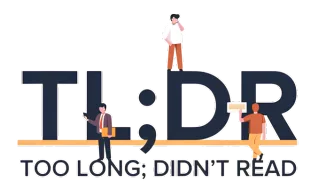Investing. It’s a word that can conjure images of suited figures shouting on a trading floor, or maybe charts filled with lines going up and down. But it doesn’t have to be intimidating. Really. There are options, and understanding those options is the first step. Three names come up frequently: crypto, stocks, and bonds. They all aim to grow your money, but they go about it in very different ways.
- Crypto, stocks, and bonds are three different investment options, each with its own risk and reward profile. Crypto is highly volatile, stocks offer ownership in companies, and bonds are essentially loans to governments or corporations.
- Regulations for stocks and bonds are well-established, while crypto regulations are still evolving, making it crucial to understand the risks involved. Diversification is key to mitigating risk across all three asset classes.
- The best investment strategy depends on individual goals and risk tolerance, with options ranging from high-risk crypto-heavy portfolios to conservative bond-focused approaches. Past performance is not indicative of future results.
Think of it like this: crypto is the fast car, stocks are the reliable sedan, and bonds are the comfortable train. Each has its place, its risks, and its rewards. The best choice depends entirely on you – your comfort level, your goals, and how much turbulence you’re willing to handle.
What Exactly Are We Talking About?
Crypto is digital money, built on something called blockchain. It’s designed to be decentralized, meaning no single bank or government controls it. That’s a big idea, and it’s why crypto can be so volatile. Prices can swing wildly, offering the potential for big gains, but also big losses. It’s a bit like betting on a horse race – exciting, but not for the faint of heart.
Stocks, on the other hand, represent ownership in a company. When you buy stock, you’re buying a tiny piece of that business. If the company does well, your stock value goes up. You might even get a share of the profits, called a dividend. Stocks are regulated, which means there are rules in place to protect investors. It’s still risky, but generally less so than crypto.
Bonds are essentially loans. You’re lending money to a government or a company, and they promise to pay you back with interest. Bonds are typically considered the safest of the three, but they also offer the lowest potential returns. They’re a good choice if you’re looking for stability and a predictable income stream.
Crypto: The Wild West of Investing
Bitcoin. Ethereum. These names are everywhere. Cryptocurrency operates on blockchain, a public, transparent record of transactions. No central authority approves or denies transactions; the network itself does. This decentralization is both a strength and a weakness. It offers freedom and security, but also makes crypto vulnerable to scams and hacks. What happens if you lose your digital key? It’s gone. No bank to call, no password reset.
Adoption is growing. More and more people, and even some institutions, are starting to invest in crypto. You can buy it through exchanges, brokers, or even ATMs. But be warned: regulations are still evolving, and the market is notoriously unpredictable. It’s a new frontier, and with that comes inherent risk.
Stocks: A Piece of the Pie
When you buy stock, you become a shareholder. You own a small part of a company, and you have a say in how it’s run (though a very small say if you only own a few shares). The value of your stock depends on the company’s performance, market conditions, and overall economic trends. A good year for the company means a good year for you. A bad year? Well, you get the picture.
Stocks are regulated by agencies like the Securities and Exchange Commission (SEC), which helps to protect investors from fraud and manipulation. You can buy stocks through traditional exchanges like the NYSE or Nasdaq, or through online brokerage platforms. It’s a relatively straightforward process, but it’s important to do your research before investing.
Bonds: The Steady Eddy
Bonds are a bit different. You’re not buying ownership in a company; you’re lending it money. In return, the issuer promises to pay you interest over a set period, and then return your principal (the original amount you lent) when the bond matures. Bonds are generally less volatile than stocks, making them a popular choice for conservative investors. But they’re not without risk. Rising interest rates can lower a bond’s value, and there’s always the risk that the issuer could default on its payments.
Bonds are also regulated, and you can buy them through brokers or directly from government agencies. They’re a good way to diversify your portfolio and add a layer of stability.
So, Which One is More Profitable?
That’s the million-dollar question, isn’t it? In 2024, Bitcoin absolutely soared, delivering a 121% return. That blew away the Nasdaq 100 (25.6%) and the S&P 500 (25%). Gold did well too (26.7%), and even US large-cap stocks saw a solid gain (24.9%). Bonds? A modest 4.57% yield on the 10-year US Treasury. It was a good year to be in crypto.
But past performance is no guarantee of future results. Historically, Bitcoin has had a low correlation with the S&P 500, meaning its price doesn’t always move in the same direction as the stock market. However, that correlation has fluctuated. Sometimes they move together, sometimes they don’t. It’s a complex relationship.
What Happened When Tariffs Hit?
Then came the tariffs in April 2025. The stock market took a beating. The Nasdaq Composite entered a bear market, falling over 20% from its peak. European indexes also tumbled, and the S&P 500 dropped significantly. Crypto didn’t fare much better. Bitcoin plunged over 6%, and Ether fell by more than 12%. Even bonds felt the impact, with yields dropping as investors sought safe havens.
The tariffs showed that even crypto isn’t immune to market volatility. It’s a reminder that all investments carry risk, and that diversification is key. Bonds offered a small respite, but even their returns were limited.
Trading and Investing: How Do They Differ?
All three asset classes require identifying patterns, but the timelines and tactics are different. Crypto and stock trading share similarities – both are sensitive to economic trends and technical patterns. But stock markets have set hours, while crypto trades 24/7. Bonds typically trade during regular market hours, but it depends on the type of bond.
Crypto trading often involves using Bitcoin or Ether as base currencies, while stocks are bought with traditional money. Bonds are traded in fixed denominations. Liquidity can be an issue with all three – smaller crypto tokens, micro-cap stocks, and less-traded bonds can be difficult to buy or sell quickly.
Crypto market patterns are fast-moving, demanding quick decisions. Stock patterns tend to track longer-term trends. Bonds move the slowest, with price shifts driven primarily by interest rates.
Getting Started: What’s the Barrier to Entry?
Stocks and bonds require a brokerage account and typically a minimum age of 18. Some stocks may have income or experience requirements. Crypto, on the other hand, only requires a wallet. No intermediary, no paperwork. Centralized exchanges require KYC verification, but decentralized platforms offer more freedom.
Stocks represent company equity with potential dividends. Crypto represents digital assets with varying uses. Bonds are loans offering fixed-interest payments. It’s a fundamental difference in how each asset works.
Regulation: A Patchwork of Rules
Stocks and bonds are heavily regulated in most countries. Crypto, however, is still figuring things out. Regulations vary widely, from outright bans in some countries to partial restrictions in others. This makes buying, selling, holding, and even paying taxes on crypto more complex.
Holding stocks and bonds is straightforward. Holding crypto requires more caution. You can self-custody your crypto in a wallet, but if you lose your private keys, your funds are gone. Keeping crypto on an exchange carries the risk of hacks or platform failures. Tax laws also vary widely, making it crucial to keep accurate records of all transactions.
So, What Should You Buy in 2025?
It depends. If you’re a thrill-seeker who believes in the future of decentralized finance, a crypto-heavy portfolio might be for you. A high-risk portfolio could be 70% crypto, 20% stocks, and 10% bonds. If you prefer a more balanced approach, a 60% stock, 30% crypto, and 10% bond portfolio could be a good fit. And if you prioritize stability, a conservative mix of 70% bonds, 20% stocks, and 10% crypto might be the way to go.
Ultimately, the best investment strategy is the one that aligns with your individual goals and risk tolerance. Do your research, understand the risks, and invest wisely. This isn’t investment advice, just a guide to help you navigate the complex world of finance.

















